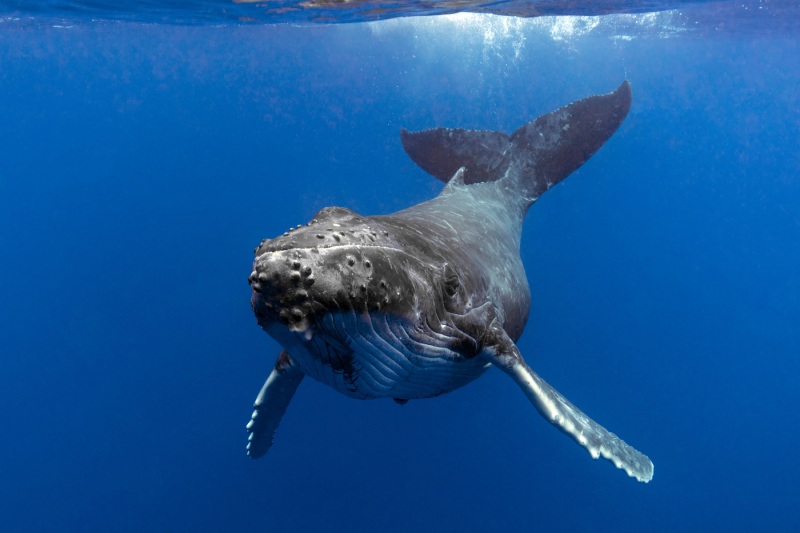What’s the connection between alien hunters and whale experts? More than you might think.
Scientists from UC Davis, the Alaska Whale Foundation, and SETI (Search for Extraterrestrial Intelligence) collaborated on a recent study that was published in the peer-reviewed journal PeerJ.
Their goal is to speak with whales. And they carried it out.
In an unprecedented experiment, Twain the humpback whale spoke to the scientists in her own tongue for 20 minutes.
We have a long way to go before we can fully comprehend what Twain and the scientists discussed, much less discuss the weather or the newest fish rumors.
That being said, something amazing did happen.
Speaking with whales
To find out if any whales would react, the scientists put a “contact call” into the water while cruising a boat off the coast of Alaska.
Contact calls resemble a warm welcome from a person. According to Business Insider, lead author Brenda McCowan, a professor at UC Davis’s School of Veterinary Medicine, whales utilize them to signal to one another or to find each other.
According to Fred Sharpe, co-author and chief scientist at the Alaska Whale Foundation, “they are one of the most common signals within the humpback whale social sound repertoire,” as reported by Business Insider.
As expected, Twain approached and circled the boat in the water. Twain answered the call each time, even closely matching the intervals, when the scientists broadcast the same contact call 36 times at different intervals over the course of the next 20 minutes.
According to McCowan, Twain would wait 10 seconds to react if the scientists waited 10 seconds before playing a call back to her. She said that interval matching of this kind implies Twain was having a deliberate conversation.
Sharpe said to BI, “It certainly felt like we had been heard,” stressing that their work is done under a permit from the National Marine Fisheries Service and that readers should not do this at home (or at sea). “And we hope that she felt the same way, too.”
“We believe this is the first such communicative exchange between humans and humpback whales in the humpback ‘language,'” McCowan stated in a press release.
The noises originated from humpback whales that the researchers had just the day before recorded from a small group of whales. Twain herself had been involved in the group, so perhaps she was reacting on her own signal.
“We might’ve been playing back her own hello to her,” Sharpe stated.
So what is this related to communicating with extraterrestrials?
As it happens, Laurance Doyle, a major scientist at the SETI Institute and coauthor of the research, pointed out that Twain’s actions might be comparable to the ways in which sentient alien races would try to contact mankind.
Interaction with extraterrestrial beings
In a statement, Doyle said, “An important assumption of the search for extraterrestrial intelligence is that extraterrestrials will be interested in making contact and so target human receivers,” which is similar to how Twain answered the scientists’ appeal for communication.
To help in their hunt for extraterrestrial intelligence, Doyle and his colleagues at SETI are collaborating with UC Davis whale and mammal scientists as well as the Alaska Whale Foundation to develop intelligent filters.
Doyle told BI that if aliens are out there trying to communicate with us by transmitting signals, we can miss them if we don’t know what to look for.
Scientists could utilize these intelligent filters to detect intelligent signals from space and potentially establish the first communication with extraterrestrial life.
“There are diverse intelligences on this planet, and by studying them, we can better understand what an alien intelligence might be like, because they’re not going to be exactly like ours,” said McCowan.
According to Doyle, BI, the research is also investigating the possibility that sentient alien life will even want to contact humanity.
“Whale research has indicated if you’re intelligent, curiosity comes along with that, and you want to make contact,” Doyle stated.
The researchers expressed hope that comparable research may be done with other sentient creatures on Earth, such as dolphins and other cetaceans, cooperative carnivores, and gregarious animals like meerkats and elephants.





